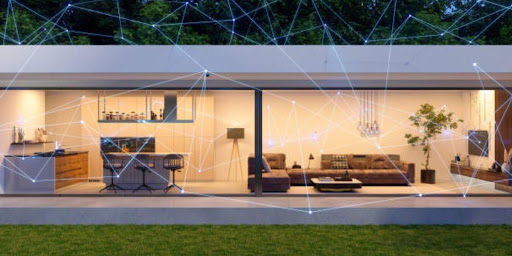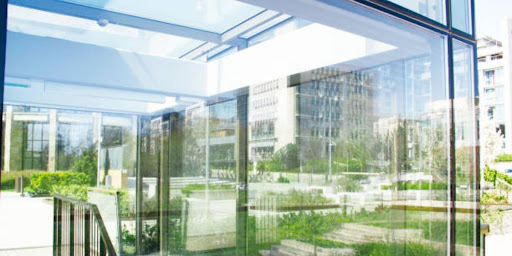Power Articles
Industry Elevating Content
Adapting to Smart Cities: How Window and Door Tech Fits into Urban Development

PowerArticles
Sept. 4th, 2023
In today’s rapidly evolving urban landscape, the concept of Smart Cities has taken center stage, revolutionizing the way we design and interact with urban environments. As cities continue to grow in complexity and density, the integration of cutting-edge technology becomes imperative for enhancing efficiency, sustainability, and overall quality of life. Amidst this transformative shift, it is crucial for companies specializing in window and door installation to recognize their pivotal role in urban development.
This article explores the symbiotic relationship between window and door technology and the Smart City revolution, shedding light on innovative solutions and strategies that empower these companies to adapt, thrive, and contribute meaningfully to the construction of smarter, more connected, and sustainable urban spaces.
The Smart City Revolution
The concept of Smart Cities represents a visionary approach to urban development that leverages cutting-edge technology to enhance the quality of life for residents and optimize city operations. Smart Cities are designed to be sustainable, efficient, and responsive to the needs of their citizens. They utilize data and digital connectivity to create a seamless urban experience.
Key components of a Smart City
Smart Cities encompass a range of interconnected components, including smart transportation systems, energy-efficient buildings, advanced healthcare services, and digital governance. These elements work together to improve mobility, reduce environmental impact, and enhance public services. Central to the concept are intelligent infrastructure and buildings that adapt to the dynamic needs of the city and its inhabitants.
The need for advanced infrastructure and technologies
Installing windows and doors in Smart Cities is not just about aesthetics; it’s about integrating advanced technologies. Smart windows, for instance, can adjust tint levels based on sunlight, reducing energy consumption. Smart doors can enhance security with biometric access control. These technologies contribute to the overall efficiency and sustainability of a Smart City by helping regulate temperature, conserve energy, and enhance security.

Window and Door Technology in Urban Development
In the realm of urban development, the significance of windows and doors often remains underestimated. However, these essential components play a pivotal role in shaping modern cities, influencing energy efficiency, security, aesthetics, and sustainability. To enlighten companies involved in window and door installation, we delve into the multifaceted contributions of these technologies to smart cities.
Energy Efficiency and Sustainability
Windows and doors serve as vital elements in achieving energy-efficient urban environments. Smart glass technologies are revolutionizing building design by dynamically adjusting transparency based on external conditions, optimizing natural lighting, and reducing HVAC costs. Simultaneously, advancements in insulation and weatherproofing materials enhance thermal performance, minimizing heat loss and decreasing energy consumption. In this way, windows and doors contribute significantly to the sustainability goals of smart cities, reducing their carbon footprint and energy demands.
Security and Safety
Urban areas demand advanced security measures, and windows and doors are not exempt from this need. Smart locks and access control systems are becoming integral components, bolstering urban safety. These technologies allow residents and businesses to manage entry remotely and monitor access, enhancing security. Furthermore, the integration of impact-resistant materials ensures resilience against natural disasters and vandalism, safeguarding urban assets and inhabitants.
Aesthetics and Design
Beyond functionality, windows and doors play a vital role in defining the aesthetic appeal of urban structures. Customization options for windows and doors allow architects and developers to harmonize these elements with the overall architectural style of the cityscape. Whether it’s blending seamlessly into historic neighborhoods or reflecting the modernist spirit of a smart city, these customization choices facilitate urban design cohesion.

Case Studies
Examining case studies provides invaluable insights into how these innovations can shape urban landscapes, improve sustainability, and enhance the quality of life for residents.
Examples of Smart Cities Leveraging Window and Door Tech
1. Energy-efficient windows in Copenhagen:
Copenhagen, Denmark, has made remarkable strides in sustainability by incorporating energy-efficient windows into its urban infrastructure. By installing double-glazed, low-emissivity windows, the city has significantly reduced heat loss, leading to energy savings and reduced carbon emissions. This case study underscores how window technology can contribute to energy conservation, making cities more environmentally responsible.
2. Access-controlled doors in Singapore:
Singapore has embraced advanced access-controlled doors to bolster security and efficiency. These smart doors use biometrics and IoT technology, enhancing access control while minimizing unauthorized entry. Such solutions are vital for maintaining safety and order in densely populated urban environments, demonstrating the role of door technology in modern city planning.
Testimonials from Urban Developers and Architects
1. Benefits and challenges of incorporating advanced window and door solutions:
Urban developers and architects who have implemented advanced window and door solutions in their projects often praise the benefits of improved energy efficiency, security, and aesthetics. However, they also acknowledge challenges related to cost, maintenance, and integration with existing infrastructure, emphasizing the importance of careful planning and collaboration with specialized companies.
2. Impact on overall urban development and quality of life:
The impact of window and door technology on urban development cannot be overstated. These innovations contribute to energy savings, increased security, and enhanced aesthetics, ultimately improving the quality of life for residents. Furthermore, smart doors and windows align with the broader goals of smart cities, creating more sustainable and resilient urban environments.

The Future of Window and Door Technology in Smart Cities
As cities around the world evolve into smart, interconnected hubs of innovation, window and door technology is set to play a pivotal role in shaping urban development. Emerging trends in this field are geared toward enhancing functionality, sustainability, and connectivity.
Emerging trends in window and door tech
- IoT Integration for Smart Homes and Buildings: Window and door technology is increasingly integrating with the Internet of Things (IoT). Smart windows and doors equipped with sensors can optimize energy efficiency by adjusting lighting and climate control based on real-time data. They also enhance security through remote monitoring and control.
- Sustainable Materials and Circular Economy Principles: Smart cities are embracing sustainability, driving innovation in materials used for windows and doors. Manufacturers are turning to eco-friendly, recyclable materials, aligning with circular economy principles. These products are not only environmentally responsible but also offer long-term cost savings.
Challenges and considerations
- Privacy and Data Security Concerns: As smart windows and doors collect and transmit data, privacy and security concerns emerge. Companies must address these issues by implementing robust data encryption and protection measures while ensuring transparency in data handling practices.
- Regulations and Standards: Evolving regulations and standards in the smart city landscape can be complex. Window and door manufacturers must stay abreast of changing requirements to ensure compliance and market readiness.
Opportunities for collaboration and innovation
- Partnerships between Window and Door Manufacturers and Tech Companies: Collaboration between traditional manufacturers and tech companies can lead to groundbreaking solutions. Integrating cutting-edge sensors, AI, and connectivity into windows and doors will drive innovation and market competitiveness.
2. Research and Development in Urban Tech: Investing in R&D specific to urban technology can yield breakthroughs. Focusing on the unique needs of smart cities can lead to the creation of products that meet regulatory requirements and exceed customer expectations.

Conclusion
In the rapidly evolving landscape of urban development, the integration of window and door technology into the framework of smart cities emerges as a pivotal factor for companies specializing in their installation. As cities around the world increasingly embrace the principles of sustainability, efficiency, and connectivity, windows and doors equipped with smart features have proven to be instrumental in achieving these goals. From energy-efficient glazing solutions that reduce carbon footprints to advanced access control systems that enhance security and convenience, the fusion of traditional architectural elements with cutting-edge technology transforms urban living spaces and shapes our cities’ future.
Published By
PowerArticles
Sept. 4th, 2023